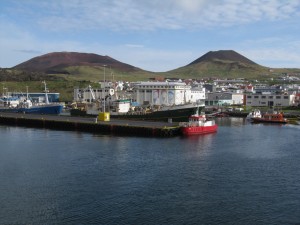Iceland is a geologically new and unique island. The dynamic glacial environments, sub-polar climate, and thunderous river systems of the country sit atop an active volcanic system on a divergent plate boundary. This intensive field course explores the geological processes that shape the island’s landscape and the climate and life of a sub-polar biome. The course also addresses aspects of Iceland’s human ecology from its early settlement to modern issues of energy, agriculture, and sustainability.
COURSE LEARNING OUTCOMES:
Students will be able to:
- understand the geologic setting of Iceland within the context of global plate tectonics.
- describe the volcanic and earth surface processes that shape the unique landscape of Iceland and understand the interactions between the various processes.
- discuss the numerous geologic hazards that result from the dynamic tectonic environment in Iceland including mitigation and preparation efforts.
- explain the fundamentals of atmospheric and oceanographic processes that act on the region’s climate and life.
- describe early and modern relationships of humans to the environment and ecology of Iceland in the context of energy, agriculture, and sustainability.
COURSE COMPONENTS
Texts
Volcanoes, Decker & Decker, Freeman Press
The Dynamic Earth, USGS (pdf & online text)
Chasing Ice, documentary film
Geologic map of Iceland
Readings Packet (to be printed by the instructors):
McPhee article
Svinasfelljokul glaciology/geomorphology article
Selected Icelandic folklore
Evaluation
Evaluation will include:
- Pre-course assignment
- one Pre-Departure Exam
- This first exam will occur before departure in August and will cover material that is summarized in on-campus discussion both in the Spring of 2015 and in the days of class before departure to Iceland
- one Mid-Course Exam
- The mid-course examination will cover material from the field portions of the course in Southern Iceland.
- one Final Exam
- The final exam will be comprehensive for the entire course but concentrate on the Northern Iceland field component.
- A detailed Field Journal (in the style & spirit of intrepid naturalists).
Taking field notes, recording field data, and writing reflection entries is all part of the Field Journal for the course.

